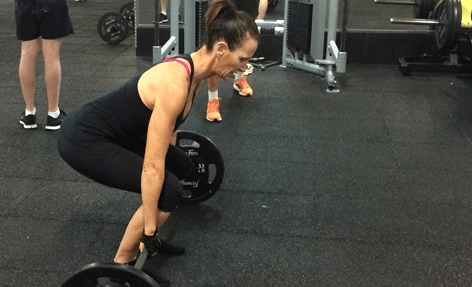Weight training and powerlifting
I have long been a devotee of strength training and started doing weights 12 years ago. Despite being relatively consistent and mostly achieving my goals, I have become bored and have decided to mix things up with powerlifting.
What is powerlifting?
Powerlifting is a strength sport involving the squat, bench press and deadlift. Powerlifters may utilize “supportive wear” to minimize injury and maximize effort. The concept hinges on the one-rep maximum (the amount lifted or pressed during a single repetition). Because powerlifting is high volume training, workouts will be shorter but occur more frequently. Workout splits are imperative to prevent overtraining and give the muscles adequate time for recovery. It is important to note that powerlifting focuses on strength gains rather than increased muscle mass.
How does powerlifting slow aging?
Powerlifting is yet another form of heavy resistance training. The benefits are much the same as any other strength-training workout – improved energy, stronger muscles and bone density. Aside from superficial perks, these benefits help thwart osteoporosis and age related injuries. A recent study determined that while powerlifting and strength training result in similar improvements to muscle mass, powerlifting is more effective for increasing actual strength. Although there is no “magic bullet for anti-aging, weight training comes awfully close. Strength training has vastly improved my physique and I see the benefits through stamina, recovery periods and overall energy. For me, powerlifting is another technique to shake things up and challenge my body.
How do I get started with powerlifting?
Because powerlifting is an advanced intense training technique, meet with a coach or trainer to teach you the basics. Failure to learn what you’re doing and how to do it can mean the difference between a sculpted physique and changing television channels from a hospital bed. Your coach or trainer will also help you set reasonable and attainable goals.
Set SMART goals
Chances are, you’ve never woken up on a Saturday and thought “Hey! I’m going to run a marathon today.” Why? Because that’s crazy. Marathons require extensive planning, training and monitoring. The same is true for just about anything we do in life from exercising to business to relationships. Goals are critical to success. More importantly, goals need to be SMART.
SMART Goals are:
- Specific: Clear and well defined. Quantitative is preferable and you should include how what you want and the desired timeframe.
- Bad Example – I want to run in a race sometime.
- Good Example – I want to run a marathon within the next 12 months.
- Measureable: You need to have measureable outcome to determine whether you have reached your goal. For example, I’ve set a simple goal for my new exercise program – to be able to squat double my current weight (on the bar) in 6 months (80kg). My current squats are at 35 kg so it will be very clear when I’ve reached my goal. I will also determine reasonable progressive goals for each month.
- Bad Example – I want to lift more weight than I do now.
- Good Example – I want to do 50 full body push-ups.
- Achievable: When setting goals, it’s easy to get carried away. Although goals are a means of pushing yourself, it’s also important to be honest with yourself.
- Bad Example – I want to win Tour de France.
- Good Example – I want to place in my age group for a local bike race.
- Realistic: As with any planning process, you must be realistic and audit your strengths, weaknesses, physical ability, time constraints and likelihood of sticking to the training program.
- Bad Example – Although I travel frequently, I’m going to go to the gym every single day regardless of where I am.
- Good Example – Although I travel frequently, I’m going to commit to four workouts per week regardless of where I am.
- Time Bound: Timeframes must be realistic. Set target dates keeping in mind all of the factors listed above. As you age, your body isn’t as resilient or pliable as once was. Keep in mind that aggressive training may be counterproductive as you are more likely to injure yourself.
- Bad Example – I’m going to run a ten-minute mile tomorrow.
- Good Example – I’m going to run a run a ten-minute mile in three months.
Time is of the essence
Do you know anyone who complains of having too much time? Probably not. Busy lives consisting of career goals/responsibilities and familial obligations means that time is precious. Powerlifting is an excellent option for time-pressed folks. As previously mentioned, the actual sessions are short because the training is high volume. Rather than completing multiple sets for each body part, workouts will be in “split” sessions meaning that you’ll work certain body parts on one day and other body parts the next day.
Change it up
Our bodies are incredible adaptable and while this efficiency keeps us alive longer, it’s a roadblock for achieving our goals. Doing the same workout day in and day out will eventually become monotonous and ineffective. It’s important to continue challenging the body just as we do the brain. Powerlifting is just one example of the many strength-training methods available to utilize the benefits of Slow Aging.
lead image: imagesbywestfall
Last Reviewed: 28-Aug-2016






